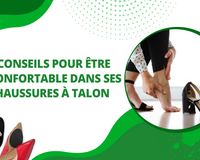Plantar fasciitis, also known as plantar fasciitisis a pathology affecting the fascia (or aponeurosis), the fiber stretched along the arch of the foot between the heel bone (calcaneus) and the forefoot. It is a inflammation of this fibre, causing intense pain in the heel and along the arch of the foot. If you're reading this article, it's probably because you suffer from this condition and would like to relief the pain, or at best heal. Here you'll learn all you need to know about the best solutions for soothing pain and curing this plantar pathology.
Why doesn't my plantar fasciitis heal?
Plantar fasciitis is one of the most widespread plantar diseases. In the USA alone, it affects over two million people every year. In fact, it's the most common most common encountered by podiatrists.
As mentioned above, it is synonymous with inflammation of the fascia. It occurs when the heel is subjected to severe too many shocks. In fact, if you wear shoes with hard soles, such as espadrilles or heels, your foot will register shocks, which will reverberate through the aponeurosis and the whole body (leading to knee, hip and back pain, etc.). This is especially true for sportsmen and women who practice runningwho are the main sufferers from this pathology.

The first thing to do when suffering from plantar fasciitis is to stop running altogether. destructive behaviorsport or wearing unsuitable footwear. This is the main reason for non-healing of plantar fasciitis. Normally, this condition can be cured in a relatively short space of time.
However, such cases only occur if the various solutions we'll be covering are scrupulously applied. Despite these highly effective solutions, it is possible that the pain persistsin which case you'll need to undergo surgical intervention to relieve the patient by severing the aponeurosis.
How can plantar fasciitis be cured or relieved?
It's important to distinguish between relief and heal. When the first term consists solely of relieving pain to short-termthe second term, on the other hand, consists of a vision of the future. long-term of treating the disease, with the aim of eradicating it completely.
How can plantar fasciitis be relieved?
This disease causes very intense painwhich can invalidate the sufferer. They generally occur when waking up to take the first steps of the day, or when getting up after sitting down for too long. However, there are many other symptoms associated with inflammation of the fascia, including the following:
- A certain tension along the outside of the foot;
- A sensation of heat in the heel, as well as the feeling of having a thorn under the heel (in which case it may be a heel spura bone formation under the heel);
- Pain when pressure is applied to the heel (standing, walking or climbing stairs) and during palpation of the arch of the foot;
- Painful pinching under the heel.
These symptoms can be relieved by applying resting your aponeurosis. You need to limit inflammation, which is the cause of all symptoms. To do this, avoid walking too much and stop wearing bad shoes. However, the only solutions you can read about below are really effective to relieve the pain.

How can plantar fasciitis be cured?
The methods used to relieve plantar fasciitis are only temporary, and the real aim is to eradicate the disease. L'inflammation is due to the dilation of blood vessels, resulting in swelling of the fascia and a sensation of heat accompanying the pain. This dilation occurs to allow more blood to flow to the injured tissue.
Yes, you read that right. The succession of shocks your foot has undergone has led to the formation of lesions within the fascia, and it is precisely this that is the source of plantar fasciitis. If the usual lesions usually repair themselves within a few days, it's because during this phase, no more tension is applied to the inflamed area. However, it's almost impossible not to stress the heel for such a long time, which is why it takes some time for the inflammation to heal. heal from plantar fasciitis.
To heal from plantar fasciitis, you need to close the lesions of the fascia. In many cases, immobilization is not necessary: just follow our advice scrupulously and plantar fasciitis will disappear.
What are the natural solutions and treatments for plantar fasciitis?
Plantar fasciitis is mostly treated with naturally. All you need to do is repeat a number of different procedures to achieve the desired result. satisfactory result. within a few weeks. Here, then, is a non-exhaustive list of the 5 best natural treatments for relieving or curing plantar fasciitis.
1. Stretching, exercise and massage
To soothe and eventually overcome plantar fasciitis, don't hesitate to practice various exercises and stretch different parts of the foot and leg. In this way, your fascia will become considerably more elastic, enabling it to absorb shocks more effectively.
For example, the most common exercise is to do rolling a massage ball on the arch of the foot. This ball is fitted with a multitude of tiny pins which, when passed repeatedly along the arch of the foot, loosen the fascia (or aponeurosis). In addition, you can use essential oils to massage the fascia through the skin.
Next, you can try catching a handkerchief on the floor with your toes. Although it may seem a little ridiculous, this exercise has a real beneficial effect on the aponeurosis. It allows you togently stretchwhich helps to heal lesions.
You can also stretch your calves over a long period of time, as this will stretch the fascia. If the fascia is more flexible, it will be easier for it to withstand shocks.

2. Acupuncture
Considered an alternative medicineacupuncture is one of the pillars of traditional Chinese medicine, which consists of releasing the body's energies by means of needles placed in precise locations. It is highly effective in many many fields but its main strength lies in its action on muscles. Acupuncture helps to relax muscles and tendons of the body, thereby stretching the plantar fascia.
3. Hot and cold
Hot and cold are two effective methods of soothing plantar fasciitis. Visit heat is very effective for combat inflammationjoint stiffness and muscle contractures. In fact, it increases blood circulation and softens connective tissue. To relieve pain, you can apply warm compresses under the feet, soak them in a hot-water bath or take a kerosene (heated wax) bath.
Ice or cold in general can be used to reduce pain and control inflammation.
4. Natural anti-inflammatories
Although anti-inflammatory drugs are effective, they prevent the tissues from repairing themselves. Your plantar fasciitis may not heal properly. For this reason, it's best to use natural anti-inflammatories to relieve the pain. These include turmeric, l'fish oil or clay poultices.
5. Physiotherapy
If self-massages don't work, you may want to consult a physiotherapist. physiotherapist. He or she will massage the arch of your foot, the calcaneal tendon and the calf, as well as aponeurosis stretching.
What are the standard solutions and treatments for plantar fasciitis?
The most effective treatments for plantar fasciitis are standard treatments. Here you'll find the five most effective treatments for plantar fasciitis.
1. Orthopedic insoles and shoes
This is undoubtedly the best-known and most effective solution for treating plantar fasciitis. Visit orthopedic insoles will support the arch of the foot, and the heel will be cushioned thanks to the insole's gel. SmartFeet offers you quality orthopedic insoles specialized in the treatment of plantar fasciitis, as well as orthopedic shoes in the same field.

2. Shockwave therapy
At the physiotherapist's, you'll also be entitled to shockwave therapy. radial shockwave therapy. This therapy non-invasive therapy treats plantar fasciitis quickly without having to stop playing sports.
3. Anti-inflammatory drugs
As mentioned above, anti-inflammatory drugs can be detrimental to the healing of the fascia. However, they may be necessary for relieve pain when it is too intense.
4. Corticoids
Corticosteroids, also known as cortisoneare natural hormones secreted by the adrenal glands. Cortisone has real anti-inflammatory properties and can help relieve plantar fasciitis.
5. Surgical treatment
If all previous treatments have had no effect after one year, then we recommend surgeryby practicing a aponeurotomy.
How long does it take to heal plantar fasciitis?
Many people suffer from plantar fasciitis. However, up to 75% of sufferers experience no pain at all. discomfort after one year.. It is also not uncommon for a person in the same situation to regain all their abilities only 8 to 10 weeks after diagnosis.









